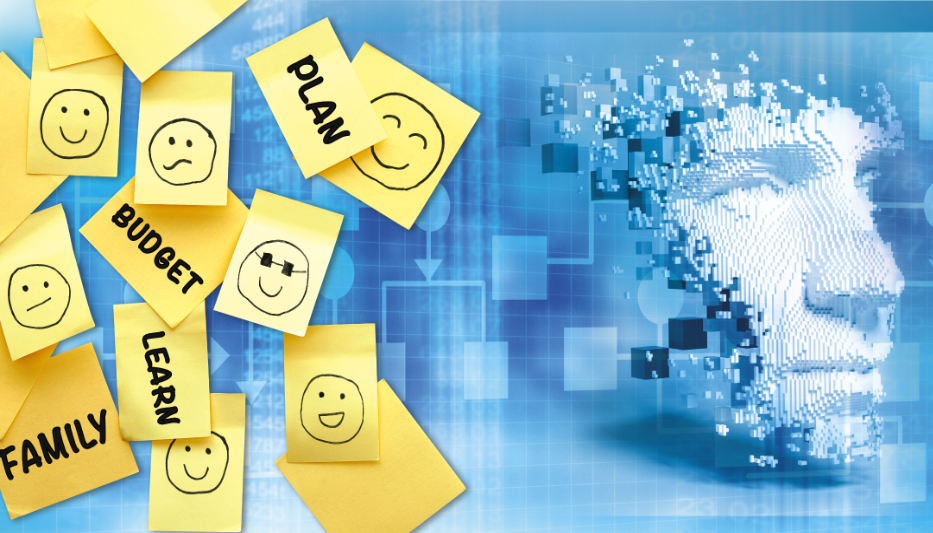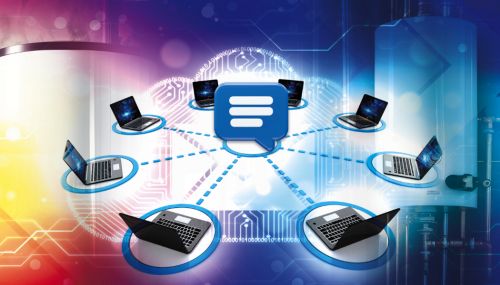All
On Personas, Profiles and Personalities
by Richard Rutigliano, PriMedia, Inc.

Identifying your ideal customer
There is a lot of talk in marketing circles these days about buyer personas and customer personalities, and creating customer profiles to determine your ideal customer.
Many years ago, PriMedia developed a marketing campaign about “Oilheat Customer Profiles.” Our campaign poked gentle fun at the individuals fuel retailers deal with every day: the Wheeler-Dealer, Worry-Wart, Know-It-All, Surfer, and Newbies, to name a few. Our pitch was that companies needed to be able to communicate with all types of customers in all types of ways.
The more things change …
The current focus on personas and personalities looks to identify the ideal. Our spoofs were anything but. The end result is the same – you need to utilize a range of content, platforms, and formats to message in ways that resonate with many different customer types.
Persona: Creating Your Customer
Persona is defined as “a character” and that is what you will be developing when determining your ideal customer persona. This will include general demographics and nuances. How old are they? Are they new homeowners, young marrieds, with children, or empty-nesters? What and how much media do they consume, what factors come into play when they make a purchase, and what are their pain points or challenges. Are they loyalists who stay with one company and one brand for years, or are they always searching for a better deal? Do they have discretionary income or are they living paycheck-to-paycheck? Are they in 700 square foot cottages or multi-bedroom, multi-level grand homes? Are they likely to be swayed by your commitment to a cause, such as environmental protection, or by the science that differentiates one piece of equipment from the next?
As you review these questions, you’ll notice similarities between your customers. Chances are, you will have clusters around two or three core personas, especially when your service area covers a wide area, and many customers who fall somewhere in-between the groups.
Once you’ve identified these groups, you will be able to create a persona, a character, for each. These fictional individuals are your customer. Perhaps not the “ideal” you would have designed – we all want the customer to have unlimited funds, be loyal, utilize the company for all our diversified services, and enrolled in automatic delivery, a monthly payment plan and a service contract. Nevertheless, unlocking your customer’s maximum potential is key to a better bottom line.
‘Aunt Betty’ or ‘Jessica-and-Brian’?
If one customer persona is a high income, status conscious, cause focused, early adapter, and another is close to or lower than the median income, just trying to save a little each paycheck for emergencies, they won’t be swayed by the same messaging. Your marketing needs to speak – in tone and language – to the persona. It might help to give them a name, so that your messaging is consistent to the real customers who are represented by the persona. “This is an ‘Aunt Betty’ campaign.” “This is a ‘Jessica-and-Brian’ campaign.” Your entire team immediately knows how to formulate the messaging.
Because building personas requires digging deeply into your account holders, you will:
- Have a better understanding of their concerns and purchase triggers.
- Develop a better sense of the products or services to add to your repertoire to increase revenue.
- Increase marketing ROI.
- Have more effective sales pitches.
- Improve your customer retention rates.
Putting it to Work
Consider the persona of ‘Aunt Betty.’ Aunt Betty is an elderly woman who doesn’t understand or isn’t interested technology, living on a retirement income. If you send Aunt Betty a spec-dense promotion using mechanical engineering jargon, acronyms, and QR codes, you will be wasting your money. ‘Aunt Betty’ needs to know a new system can be financed, will be trouble-free, and use less energy – and she needs it to be easy to understand.
‘Jessica-and-Brian,’ on the other hand, are thirty-something, newly married, with coordinating college degrees in education and computer science, and they research every purchase very, very, very carefully. On their phones. They want specs, emissions ratings, annual reductions as well as cost of use, and the original manufacturer materials. They don’t want your opinion – they want online reviews and lots of them. The spec-filled promotion is right for them. An Aunt Betty promotion could be discarded for being too simple or paternalistic, and might even be seen as insulting.
It doesn’t take much to separate your mail list, adjust your content to answer Aunt Betty’s pain points or Jessica-and-Brian’s interests, and distribute more personalized email promotions.
Digital marketing campaigns can be targeted in similar ways, by uploading the emails or phone numbers of your groups of Aunt Bettys or Jessica-and-Brians and targeting those customers with appropriate messages on their phones and streaming platforms. This data can also be used on most digital platforms to identify ‘look alike” audiences: potential customers who share the same traits, interests, and hobbies as your personas.
Personalities – The Buyers Within The Persona
It is important to remember that there are real people represented by each persona, each with his or her own personality. The persona is a mélange of data about your customers. The customer personality is individual. The persona may direct your messaging, but the personality is the buyer.
Customer personalities have been whittled down to four types: direct, expressive, analytical, and amiable. As you create messaging for the personas above, you must also take the personalities into consideration.
Direct personalities: This customer does not want small talk. He or she does not suffer fools – or fluff – lightly. They are no-nonsense and often controlling. You need to have all the information at hand; provide pricing, time frames, and requirements up front; and offer options and the pros and cons that go with them.
Expressive personalities: If you like small talk, these are ‘your people.’ Expressives are those individuals who make friends wherever they go and expect to share. They will want to tell you about their lives outside the issue, and want to know more about the people they work with. If expressive customers feel comfortable with you, they will come back again and again.
Analytic personalities: The analytic has done the research and created the spreadsheet. They will let you know what they found, what they liked and what they did not want, and often offer solutions that you need to acknowledge and consider. They will have questions and follow-up questions. It is imperative that you have the right answers because they will fact-check! Like the direct personality, analytics are looking for solutions.
Amiable personalities: The amiable always has a team, and everything is about teamwork. This is the person who always “knows someone” to accomplish any task. They thrive on bringing people together. They will also strongly consider professional input when making a decision. Amiables will keep their providers on the ‘team’ for years.
It Takes All Types
Your marketing needs to speak to your customer personas as well as your customers’ individual personalities. But each persona group – your Aunt Bettys and your Jessica-and-Brians will be made up of direct, expressive, analytic, and amiable personalities. How then, can you meet the wants and needs of these diverse groups?
Once again, the answer lies in combining your data and your digital outreach.
One of the biggest benefits of programmatic and digital ad campaigns is the machine learning and artificial intelligence that powers these platforms. Utilizing their deep resources and wealth of knowledge about the user, they can automatically choose the images, text, and headlines from your campaigns to deliver the best results.
By creating campaigns with multiple options, you can essentially be all things to all people. Content related to your products and services’ prices and benefits can be provided to the no-nonsense direct and analytic types, giving them the answers they need quickly and concisely. Content about how these products and services will make their lives easier and give them more time to enjoy with family and friends will appeal to the expressives and amiables. The digital platforms will not only test the campaign content on different audience types, but will identify and then display the best performing content for each audience. This will reduce your cost per acquisition and increase your engagement metrics.
You can also create unique messaging for your customer portal. By developing a group of messages, you can rotate the on-portal ads while your customers are paying their bills, requesting a service call or a delivery, or learning about your maintenance contracts and budget plans. As the ads rotate, the customer will see one or more that resonates.
What’s Old is New Again
Here’s an interesting twist. In our digital age, “snail mail” newsletters have become welcome again. You can use them to highlight products and provide specifications, costs, ROI, and benefits; spotlight star employees; promote loyalty programs; and talk about your company history and roots in the community. Including all this in a printed newsletter and its digitally-delivered online version, you can truly be one thing for all people.
Richard Rutigliano is President of PriMedia, Inc., an integrated marketing and communications firm specializing in the home energy sector. He can be reached at 516-222-2041 or rrutigliano@primediany.com.
Related Posts
 It’s Upgrade Season. Get the Sale.
It’s Upgrade Season. Get the Sale.
Posted on October 16, 2025
 Your Business Rises and Falls by Your Customer Service
Your Business Rises and Falls by Your Customer Service
Posted on September 19, 2025
 Teamwork Makes the Dream Work!
Teamwork Makes the Dream Work!
Posted on August 18, 2025
 Keeping Your Price Protection and Budget Plans Safe in a Volatile Market
Keeping Your Price Protection and Budget Plans Safe in a Volatile Market
Posted on July 28, 2025
Enter your email to receive important news and article updates.
